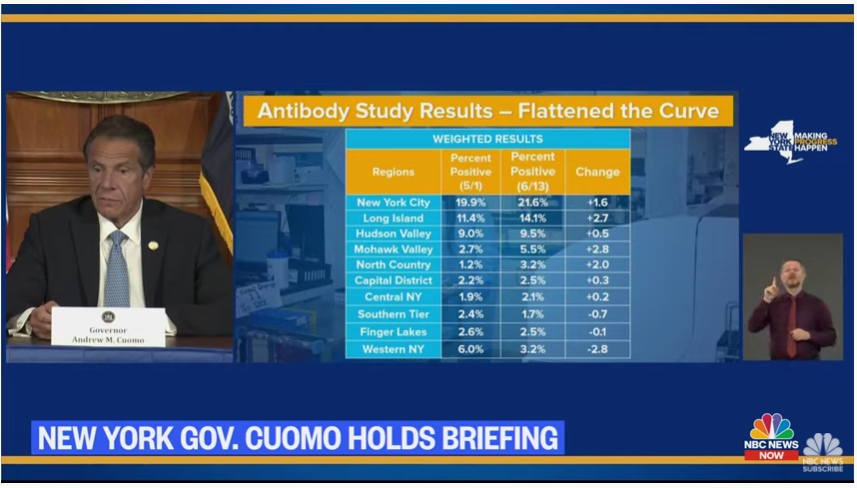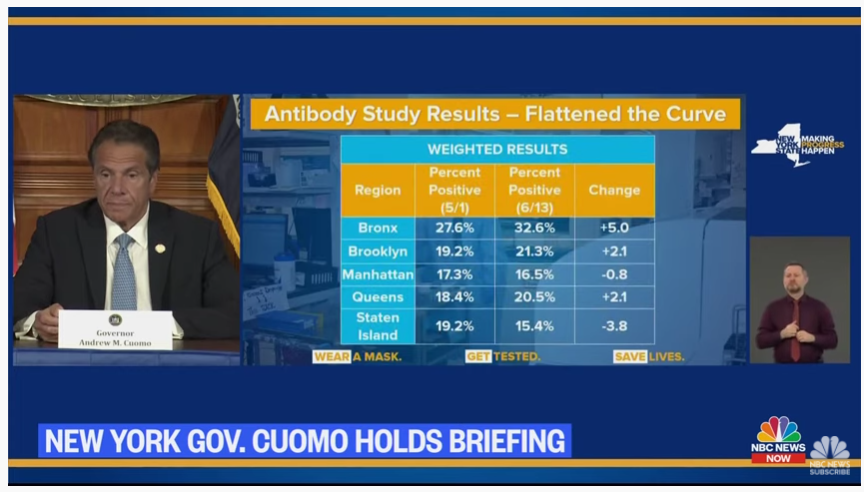Cuomo announced that NY repeated their seroprevalence antibody survey and, overall, the percentage of people in NY with antibodies went from 12.3% (on 5/1) to 13.4% (on 6/13). Below is the breakdown for the regions in the state and for NYC, showing that the Bronx is up to 32%, while SI/Manhattan are only around 15-16%, with Brooklyn/Queens in the low 20s.
With 30,700 dead as of 6/13 that's an infection fatality ratio of 1.15% (vs. 2.68MM infected), which is up a bit from the 1.0% it was back on 5/1. Just to repeat the hard facts: at an eventual IFR of 0.5-1.0% (assuming it comes down a bit) and assuming 55-80% get infected in the US, that's 900K - 2.6MM US deaths, eventually, assuming no interventions and no cure/vaccine. It's really simple math, but somehow people just don't seem to be getting it.
I've said I think we'll have a near cure by early fall in the engineered antibodies and a vaccine by the end of the year, plus treatments are improving now, as we saw today, but the preceding numbers show the worst case, plus it's possible the cure doesn't pan out and the vaccine is delayed by 6+ months, which is why people should practice mask-wearing and distancing until we have a cure/vaccine. The probability of luck with the virus weakening or more widespread native immunity than we realized (which would also greatly reduce deaths) is not zero, but it's unlikely.

